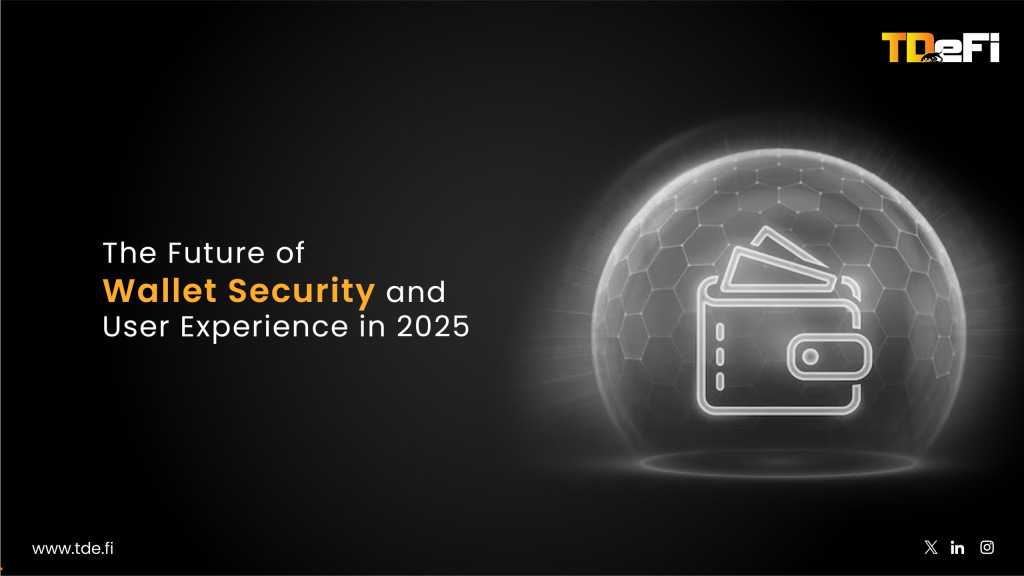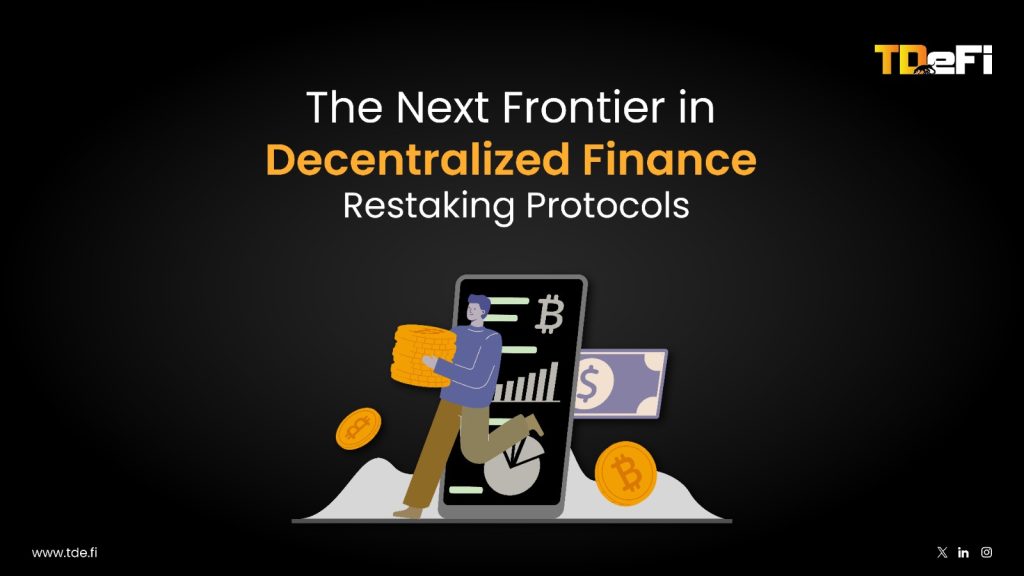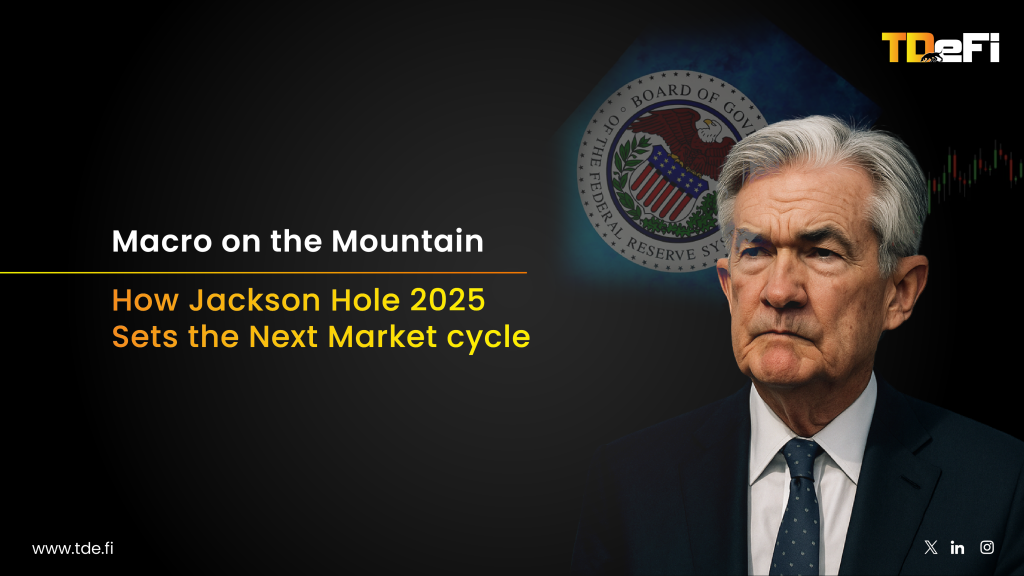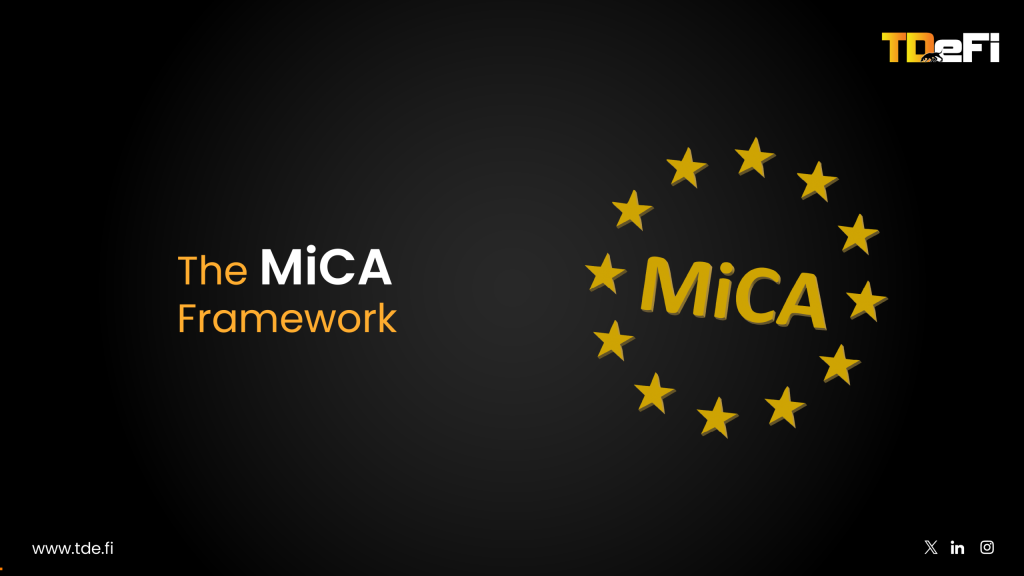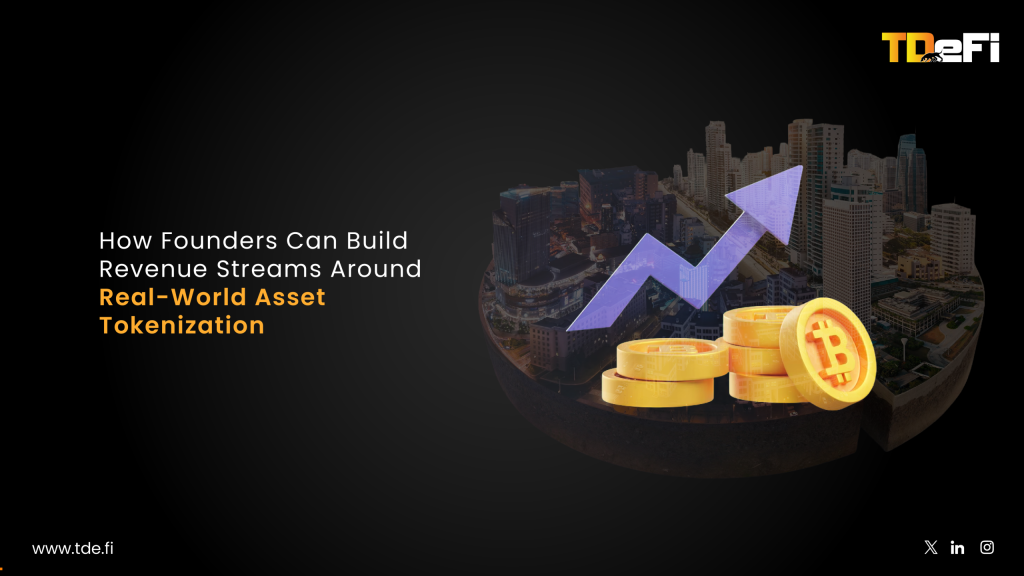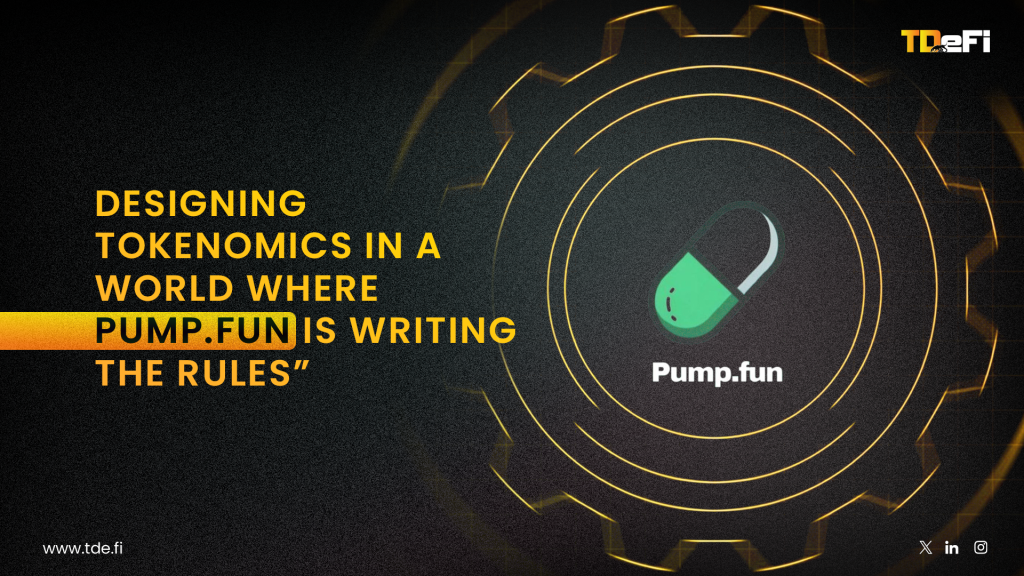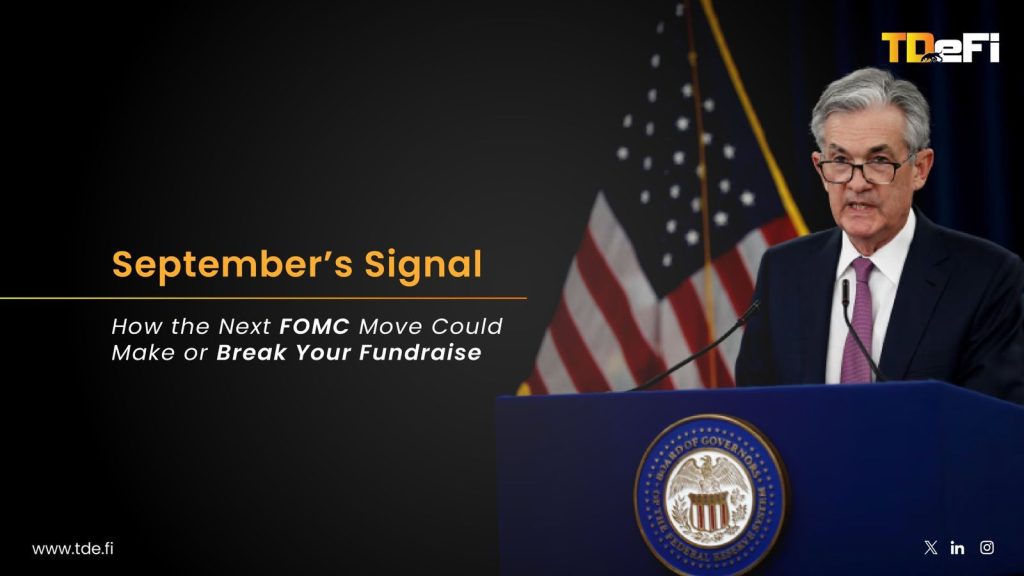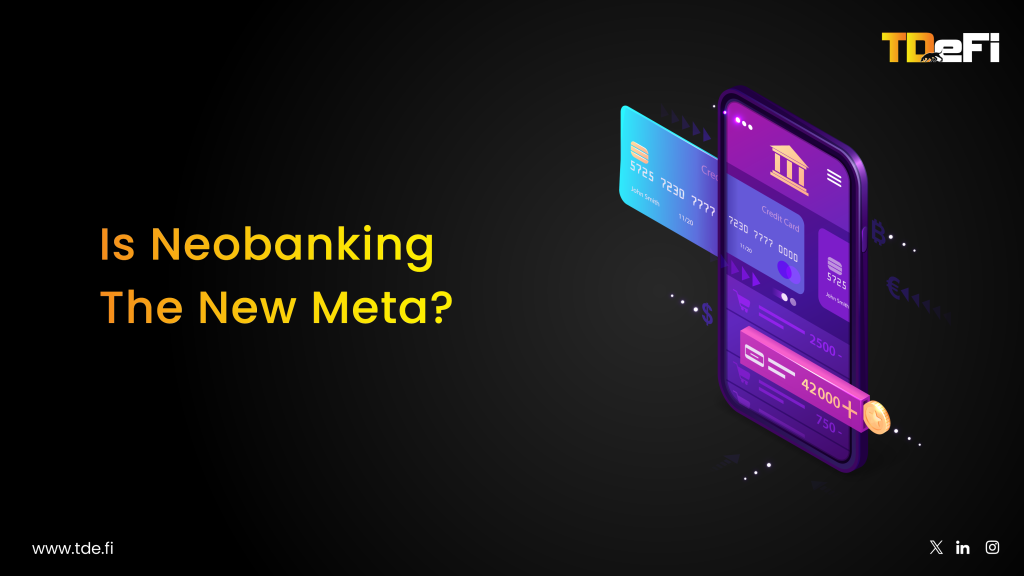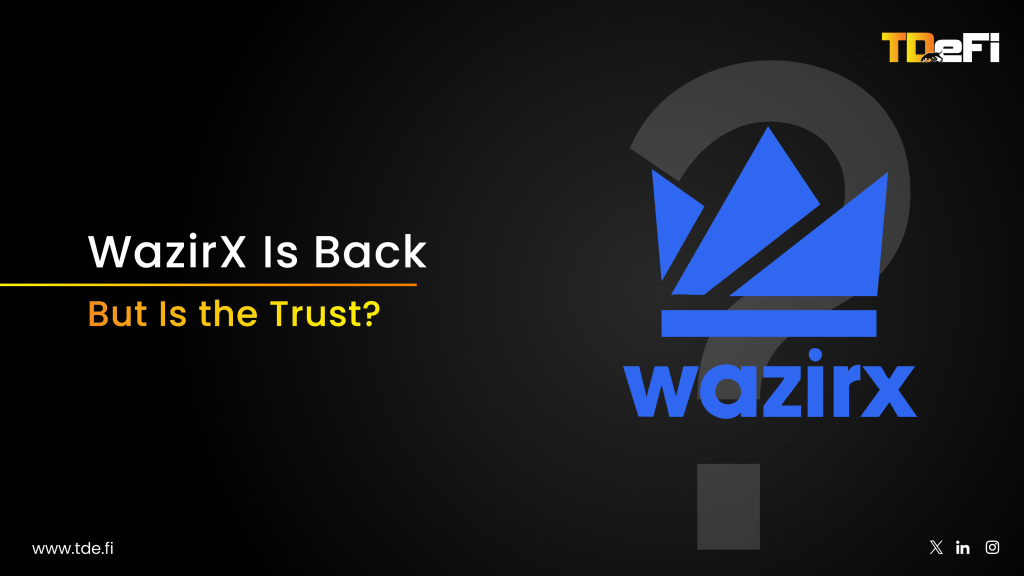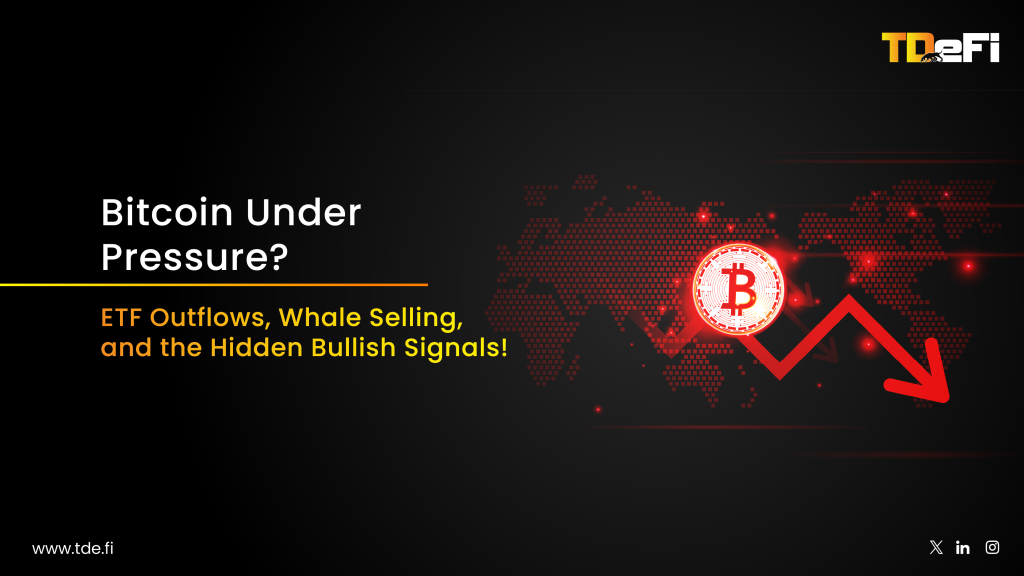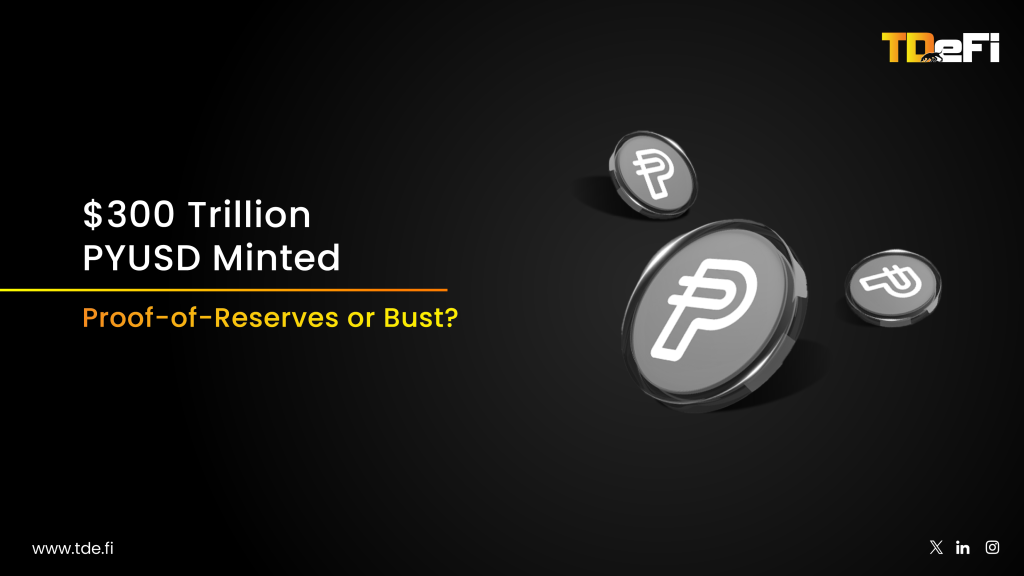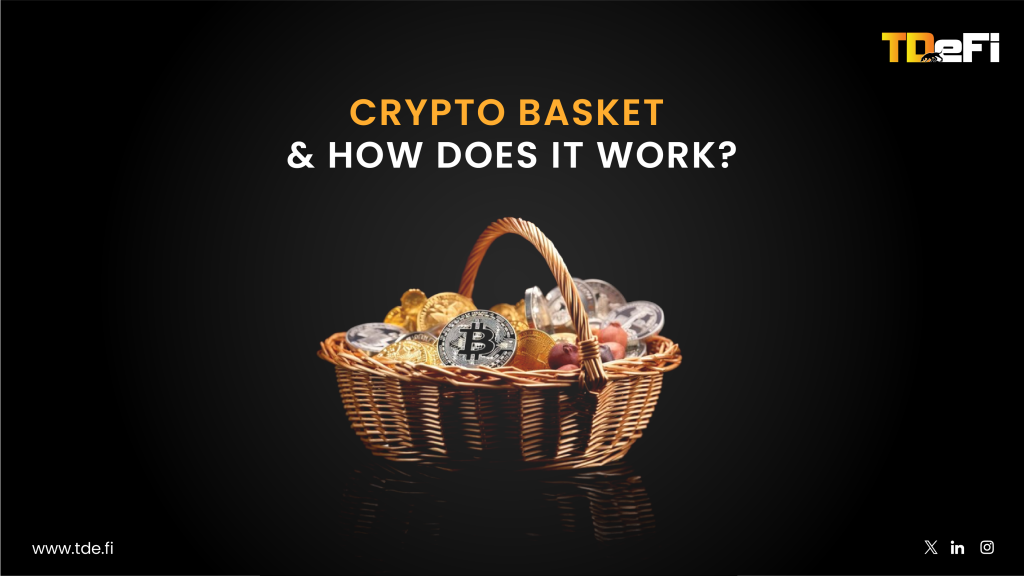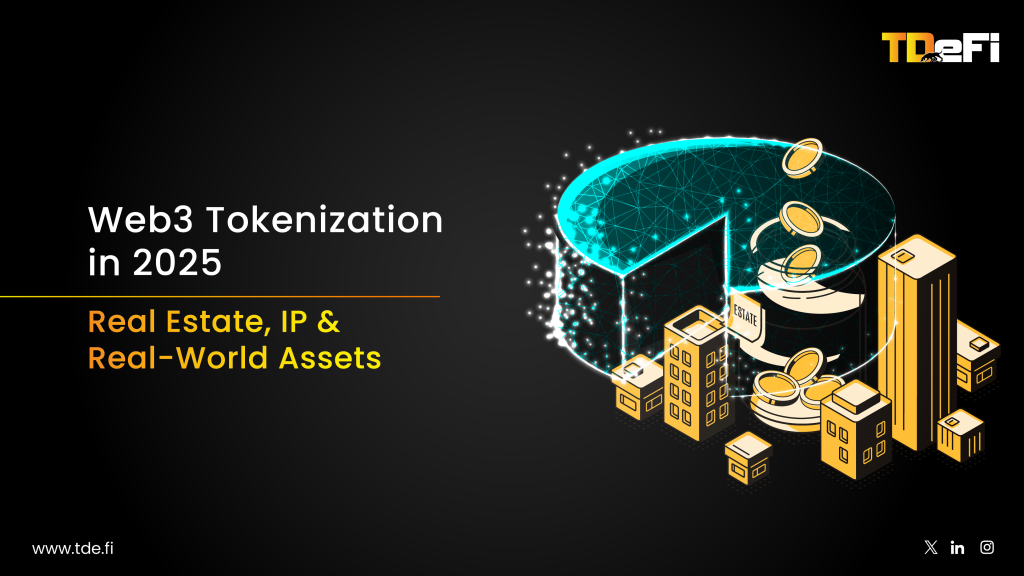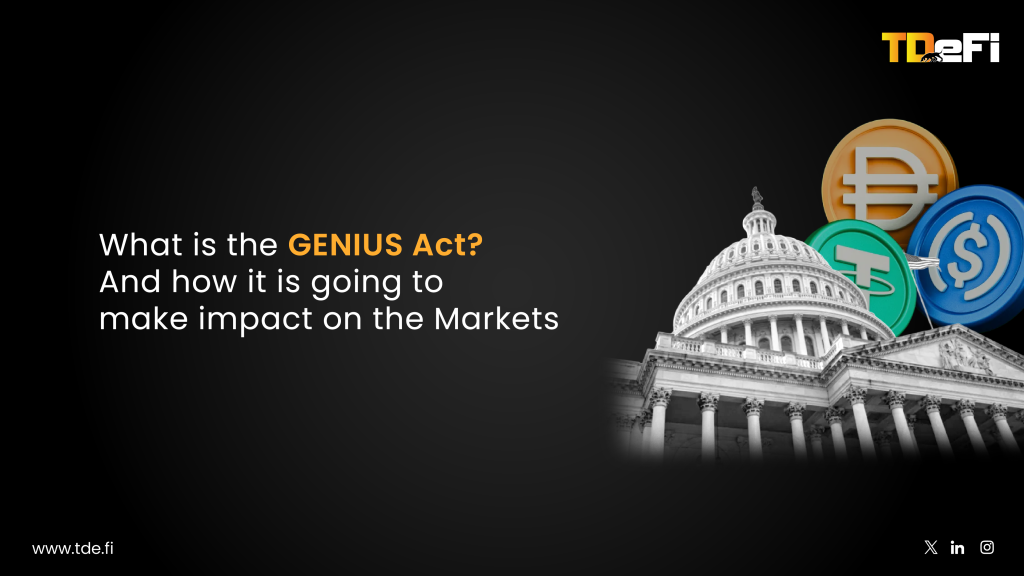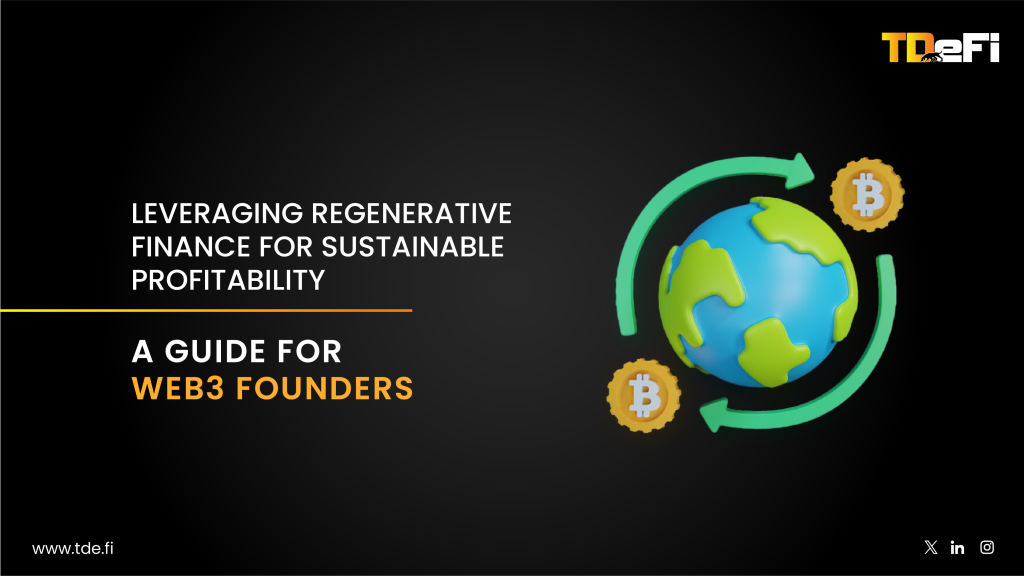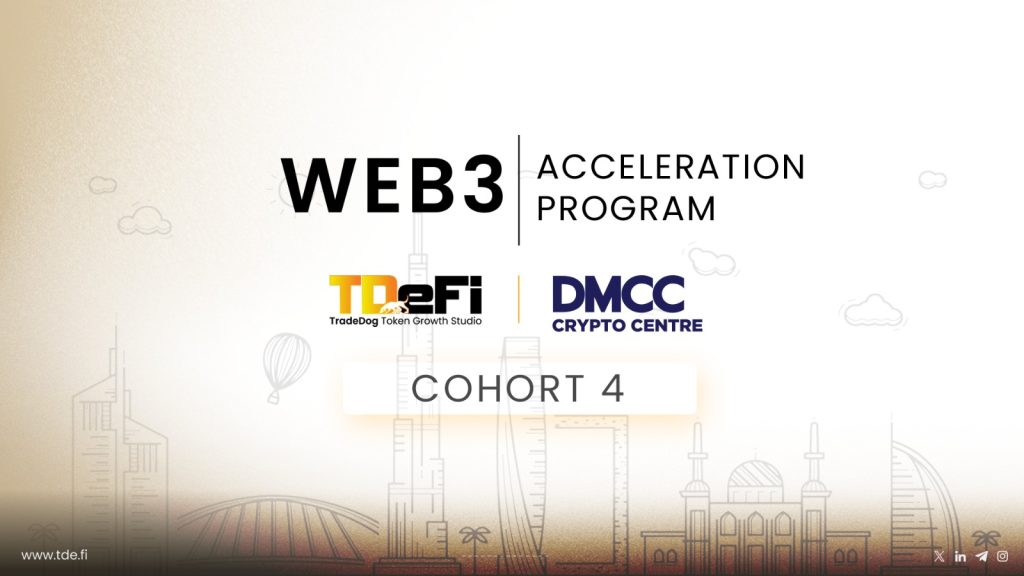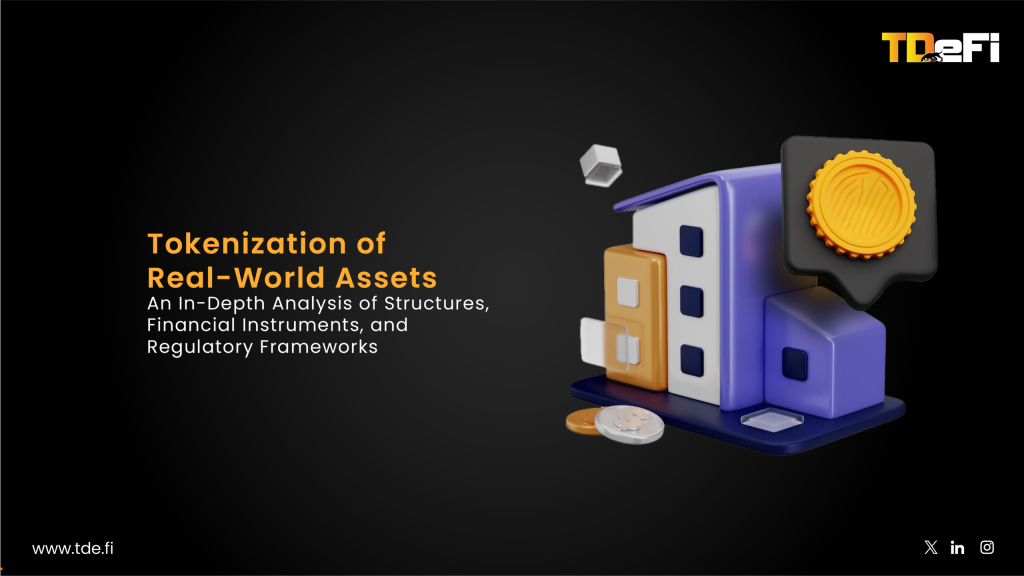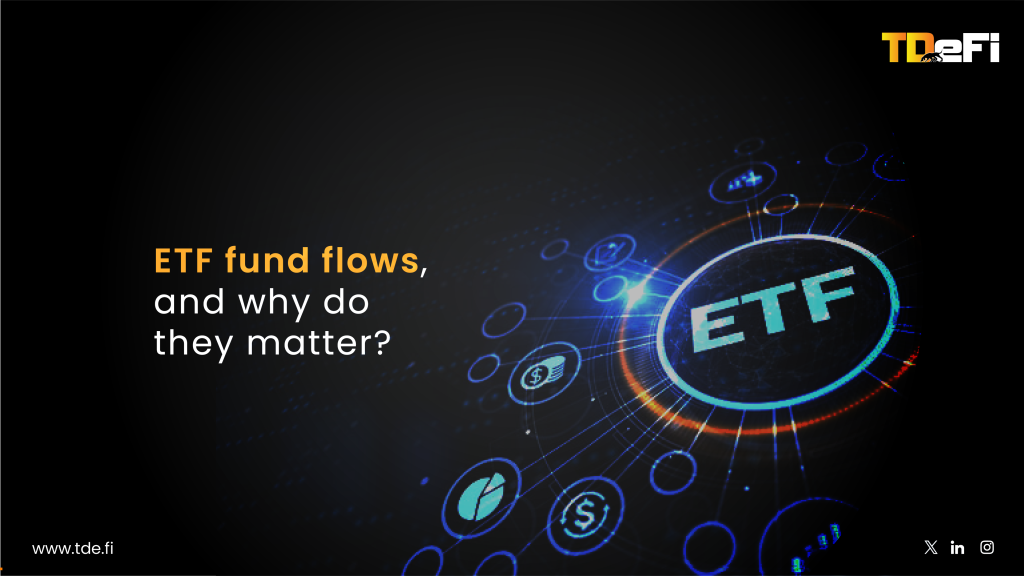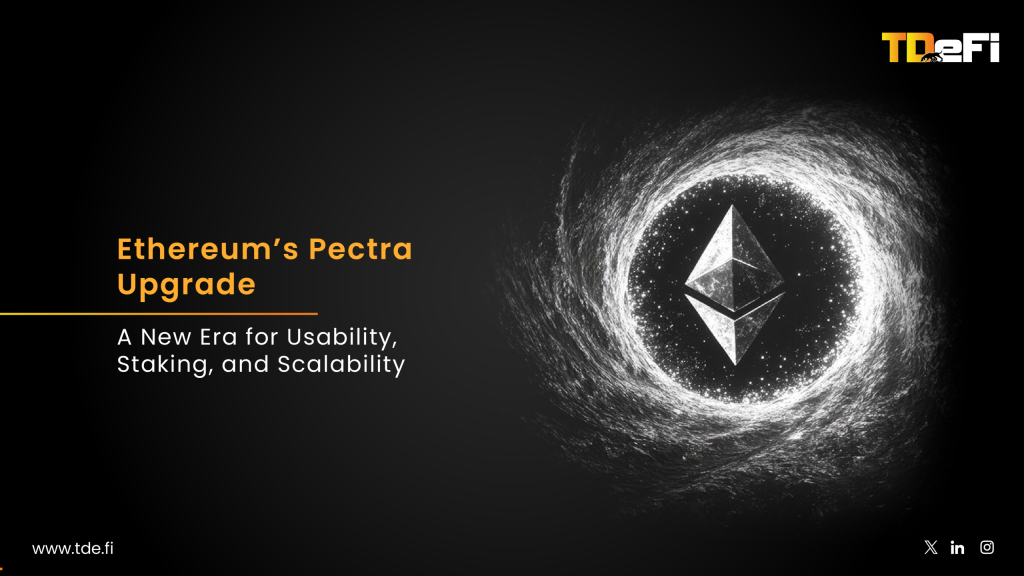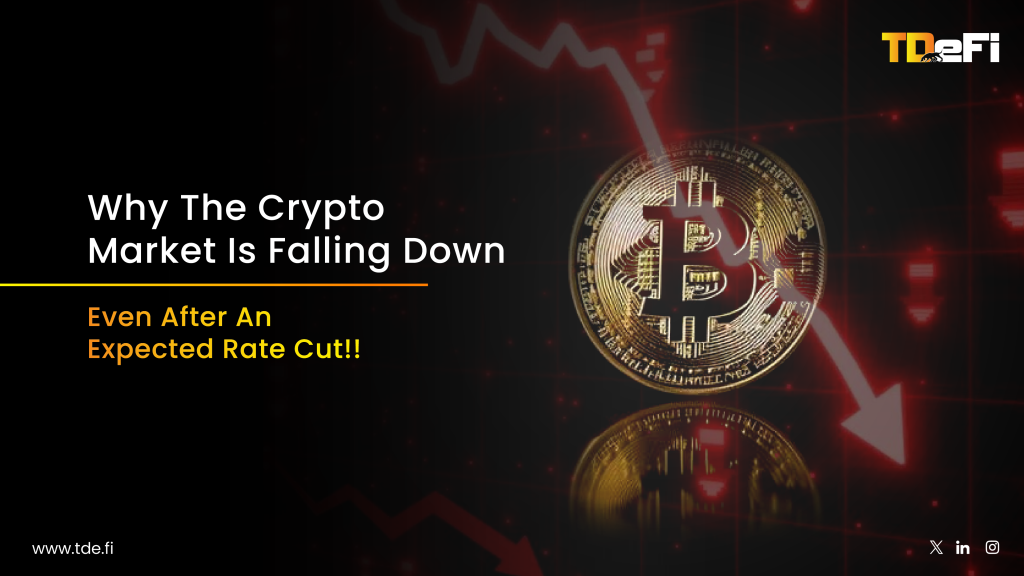The Federal Open Market Committee (FOMC) recently announced it would keep the Federal funds rate steady at 4.25% to 4.5%, a decision carrying significant weight across capital markets, including the fast-evolving crypto space. With economic uncertainty still hanging in the air and inflation proving stubborn, this rate hold ripples into various corners of crypto, from Real World Assets (RWA) and decentralized finance (DeFi) to infrastructure protocols and major tokens like Bitcoin (BTC) and Ethereum (ETH).
In this blog, we dive into the Fed’s latest stance, exploring how maintaining rates at these levels (and earlier decisions in the 5.25%–5.50% range) shapes investor sentiment, market dynamics, and crypto valuations. As U.S. monetary policy continues to evolve, we look ahead at potential paths for digital assets and what signals investors and founders should watch for next. This could be with respect to major decisions such as funding projections and timelines, their GTM’s, launch dates or even, their routine operational cycles.
U.S. Monetary Policy and Capital Markets
U.S. Federal Reserve policies have long been a critical factor in determining the movements in cryptocurrency markets. Interest rates set by the Fed affect liquidity, risk appetite, and capital flows, which in turn compel investors to reshape crypto valuations. It is generally assumed that lower interest rates encourage borrowing and investment in relatively riskier assets like cryptocurrencies by making traditional savings and bonds less attractive. Conversely, increase in rates also increase the cost of capital and can reduce inflows in alternative investments, including crypto.
The Fed’s recent stance of maintaining rates at a high range (4.25%-4.5%) since December 2024 reflects a cautious approach amid ongoing inflation and a slowing economy. This “higher-for-longer” policy environment creates a nebulous backdrop for crypto investors, balancing inflation fears against growth concerns.
The FOMC Announcement: Key Details and Market Expectations
On June 18, 2025, the FOMC decided to hold the federal funds rate steady at 4.25%-4.5%, as widely anticipated by markets. The Fed’s Dot-Plot, a forecast tool showing individual committee members’ rate expectations signaled a reduction in the number of expected rate cuts for 2025, from two in March to just one now. This hawkish tilt suggests that tighter monetary conditions will persist longer than previously thought
and the markets can only remain content during such ambivalence.
The Fed’s economic projections indicate sluggish GDP growth of approximately 1.5%-1.8% in 2025 and inflation settling near 3%, underscoring ongoing stagflationary pressures and setting stage for global growth concerns.
How did the markets react?
Following the announcement, Bitcoin hovered near $105,000 and is currently trading at $119,000., and Ethereum traded around $2,500, showing relative stability but with signs of cautious investor sentiment. The markets had largely discounted for the rate hold, so the initial reaction was mostly muted. However, the Fed’s more hawkish dot plot and reduced rate cut expectations introduced limited, but some downside pressure, particularly on altcoins and DeFi tokens, which are more sensitive to liquidity conditions.
It should be noted that a prolonged high-rate environment keeps capital expensive, limiting inflows into speculative crypto assets. Bitcoin, often viewed as a digital store of value, could see increased dominance as institutional investors de-risk from smaller altcoins and seek safer crypto assets.
Historical Context: How Crypto Has Reacted to Fed Policies
Historically, cryptocurrency markets have shown a strong correlation with Fed monetary policy changes. For example:
| Date / Period | Fed Rate Action | Bitcoin Market Reaction |
|---|---|---|
| 2018 | Gradual hikes to 2.5% | Fell ~80% from highs → the infamous 2018 crypto winter. |
| Mar 2020 | Emergency cuts from 1.25% → 0.25% due to COVID crash | Dropped to ~$5,000, then rallied 375% over the next two years. |
| Late 2021 | Hawkish signals, tightening ahead | Sold off from >$60,000 to <$20,000 by mid-2022 (nearly a 70% drop). |
| Mar – Nov 2022 | Aggressive hikes → Fed rate climbs from 0.25% to over 4.00%, with multiple 75 bps jumps | Bitcoin fell further, eventually bottoming near $16,000 in Dec 2022. Other crises (e.g. Terra/Luna, crypto credit crunch) compounded the drop. |
| May 2022 | Powell rejected the notion of a “Fed put,” signaling no rescue for markets | Accelerated drop in crypto; BTC had already lost over 50% from its peak. |
| Early 2023 | Fed paused hikes, holding rates steady around 5.25–5.50% | BTC rebounded >20% in Q1, reflecting optimism amid rate stability. |
| Mar 2023 | Powell’s unexpectedly hawkish remarks during banking turmoil | Triggered volatility; BTC and ETH saw sharp price swings. |
| Sep – Dec 2024 | First rate cuts in nearly 3 years → Fed funds rate lowered from 5.00% → 4.25% | Crypto markets responded positively; BTC and DeFi metrics began rising. |
| May 2025 | Fed held rates steady at 4.25–4.50%, signaling cautious policy ahead | BTC and ETH gained 5–12% in days; DeFi participation also increased. |
This is evidence that crypto markets as a subset of the capital markets, share a strong explanatory relationship with the rates set by the Feds. The relationship can be defined as a negatively sloped graph where they move inversely to each other.
Currently, BTC has touched an ATH price of $123k and has consolidated near the $117k mark, while the rates have remained stagnant. A more relaxed fiscal and monetary policy in the future could, thus, push BTC towards breaking all records, and not just BTC, but many altcoins will see major rallies. This may be because the market is expecting stringent rates to continue in the coming days, and has discounted prices accordingly. Even a slither of hope in terms of rate relaxation could help breach price ceilings.
Let’s address the most important question, what are the implications for the founders
Fed rates act as a leading factor in capital calls for venture capitalists which is why we have plotted this graph to reflect how a change in rates can change the capital inflows to startups.
Increases in the Federal Reserve’s benchmark interest rate dramatically alter the landscape for startups. Here’s why:
- When the Fed hikes funding future growth becomes costlier, and valuations compress. For instance, from 2015 to 2019 the Fed gradually raised rates from near-zero to 2.4%, and early-stage startup valuations declined as the cost of capital rose.
- Empirical data shows a 1 % increase in rates can correspond with a >3 % reduction in annual venture capital fundraising. Following the Fed’s aggressive increases in 2022–23, startup investment shrank VCs prioritized profitability over hyper-growth.
- Startups relying on debt or venture debt financing see monthly payments climb with rising rates. One example: a $100K loan at 3 % becomes notably more expensive at 3.5 %, a shift with material cash-flow implications.
- Higher rates weigh on IPO and M&A activity. In 2015, as rates began rising post-crisis, many unicorns struggled to exit, prompting a “unicorn reckoning”.
What should Founders/CFO’s/COO’s be mindful of?
- In a rapidly shifting macro environment, early-stage crypto founders, CFOs, and COOs must approach fundraising and treasury management with precision and foresight. Timing is everything: securing capital just before anticipated rate hikes can lock in more favorable valuations, as higher rates often trigger a pullback in venture activity and compress startup multiples. But timing alone isn’t enough, capital efficiency becomes paramount. Investors are scrutinizing burn rates, unit economics, and the path to profitability more than ever; demonstrating operational discipline and a clear plan for sustainable growth will set you apart in a cautious market.
- Diversify your funding sources. Beyond traditional VC, explore token-based fundraising (ICOs, IDOs, STOs), grants from blockchain foundations, and DAO-driven community rounds. Each comes with unique trade-offs in terms of dilution, regulatory complexity, and speed, mixing these approaches can optimize both runway and governance flexibility. Stay close to macro signals: sharp Fed rate hikes often precede VC tightening, so founders should proactively extend runway, revisit hiring plans, and stress-test financial models against adverse scenarios.
- Build investor relationships early. The strongest raises are built on trust and transparency, know your numbers, be candid about risks, and articulate how your project stands out in a crowded field. Finally, maintain regulatory readiness; compliance lapses can derail even the most promising rounds. In volatile times, the best-prepared teams not only survive but often emerge as market leaders, having turned macro headwinds into strategic opportunities.
What the Future Holds for Crypto Based on U.S. Government Policy
Given the Fed’s current stance and economic outlook, the crypto market faces a
nuanced future:
- Short to Medium Term: The “higher-for-longer” rate environment will likely keep liquidity tight and risk appetite cautious. Crypto valuations may remain range-bound with episodic volatility driven by geopolitical events and economic data releases. Investors may favor Bitcoin and yield-generating assets over speculative altcoins.
- Potential Rate Cuts: If inflation moderates significantly, the Fed could begin cutting rates later in 2025, potentially igniting renewed crypto rallies. Such easing would increase liquidity and encourage capital inflows into riskier assets, including cryptocurrencies.
- Regulatory and Fiscal Factors: U.S. government policies beyond monetary policy, such as regulatory clarity and fiscal stimulus, will also influence crypto adoption and market dynamics. The interplay between inflation control, debt servicing costs, and political pressures adds complexity to forecasting.
- Sectoral Evolution: Real World Assets and DeFi sectors may adapt by innovating yield products aligned with traditional finance rates. Infrastructure projects that demonstrate resilience and utility could attract sustained investment despite macroeconomic headwinds.
The crypto community is closely watching Fed Chair Jerome Powell’s commentary for clues on the timing of future rate cuts. While the Fed signaled the possibility of two cuts later this year, the reduced number of cuts and the hawkish tone imply a cautious path ahead. This has fostered a “higher-for-longer” narrative, dampening near-term bullish momentum but leaving room for upside if inflation moderates more than expected. Geopolitical tensions, notably the Israel-Iran conflict, add to market uncertainty, potentially exacerbating volatility in crypto markets. Traders are bracing for sharp price swings and are focusing on key support and resistance levels for major tokens like Bitcoin and Ethereum.
Takeaways for Founders/ Founders: What have we learnt?
The FOMC’s decision to hold the federal funds rate at 4.25%-4.5% with fewer anticipated cuts in 2025 signals a cautious but steady monetary policy stance amid persistent inflation and economic uncertainty. This “higher-for-longer” environment exerts pressure on crypto markets by constraining liquidity and risk appetite, particularly affecting DeFi and Real World Asset sectors. Major tokens like Bitcoin and Ethereum showed resilience but face limited further near-term upside without easing.
Market participants are closely watching Fed Chair Powell’s communications and economic data for clues on future rate moves. While the current stance tempers bullish momentum, a potential pivot to rate cuts later this year could reignite crypto growth. Historically, crypto markets have been highly sensitive to Fed policy shifts, underscoring the importance of U.S. monetary decisions in shaping the digital asset landscape.
Investors and traders should prepare for continued volatility and nuanced sectoral impacts, balancing opportunities in yield-generating products and quality assets against broader macroeconomic risks. The evolving U.S. policy environment remains a critical factor for crypto’s trajectory in 2025 and beyond.







